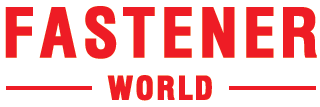Little Gain for EU Steel Despite Rising Demand

EU steel demand is expected to rise by 1.5% in 2015 on the back of sustained momentum in Europe’s economic growth, despite ongoing uncertainty. However, European producers are not expected to benefit as improving steel demand will be met by imports of the metal, anticipated to be up 5% this year.
In the first quarter of 2015, GDP growth sustained the momentum seen in the second half of 2014, and the signs that domestic demand is modestly rebounding are getting stronger. This GDP growth is currently being driven by private consumption. Low oil prices, weak inflation, low interest rates and improving wage growth in several EU countries are paving the way for moderate increases in consumer spending.
However, investment growth is lagging as uncertainties – including the Greek debt crisis, structural constraints in the Euro area, slowing global growth and geopolitical risks – weigh down on confidence. The expected improvements in economic fundamentals in 2016 underpin the scenario of investment steadily gaining momentum and taking over the role of key driver for EU economic growth.
Activity in European steel consuming sectors has remained sluggish. Presently, only the automotive sector is experiencing confident growth. European Steel Association (EUROFER) Director General Axel Eggert said, “Our downstream clients are generally seeing muted business conditions. They see little impact from apparently brighter macroeconomic conditions, and headwinds and uncertainties persist. That is why the corporate sector remains cautious about larger scale investment in fixed assets such as machinery and equipment, buildings and new technology”.
Overall, total activity in EU steel consuming sectors is expected to rise by 2% in 2015 and by 2.7% in 2016. During the first quarter of 2015, apparent steel consumption in the EU was only marginally up on the same period of 2014. However, it is third country suppliers – rather than domestic producers – that have benefited from the additional volumes in the EU steel market, as initially feared by EU steel mills. This trend seems to have continued in the second quarter.
Overall, apparent EU steel consumption is expected to grow 1.5% in 2015. However, given the expected rise of almost 5% in total imports over the year, domestic steel suppliers are, again, hardly likely benefit. In 2016, apparent EU steel consumption growth is expected to be marginally higher, at 1.9%.
Mr Eggert commented on the figures stating, “Despite the weaker euro and rather sluggish demand conditions, EU steel imports are again rising significantly, thereby fuelling price competition and eroding margins. Massive and increasing overcapacity in China in an era of slowing growth is the root cause of this destabilisation of the EU and global steel market. Chinese exports to the EU rose 49% year-on-year over the first five months of 2015. As long as Chinese mills continue to offload their products rather than cut production, we foresee the continuation of difficult market conditions.”(source: eurofer)

Subscribe






